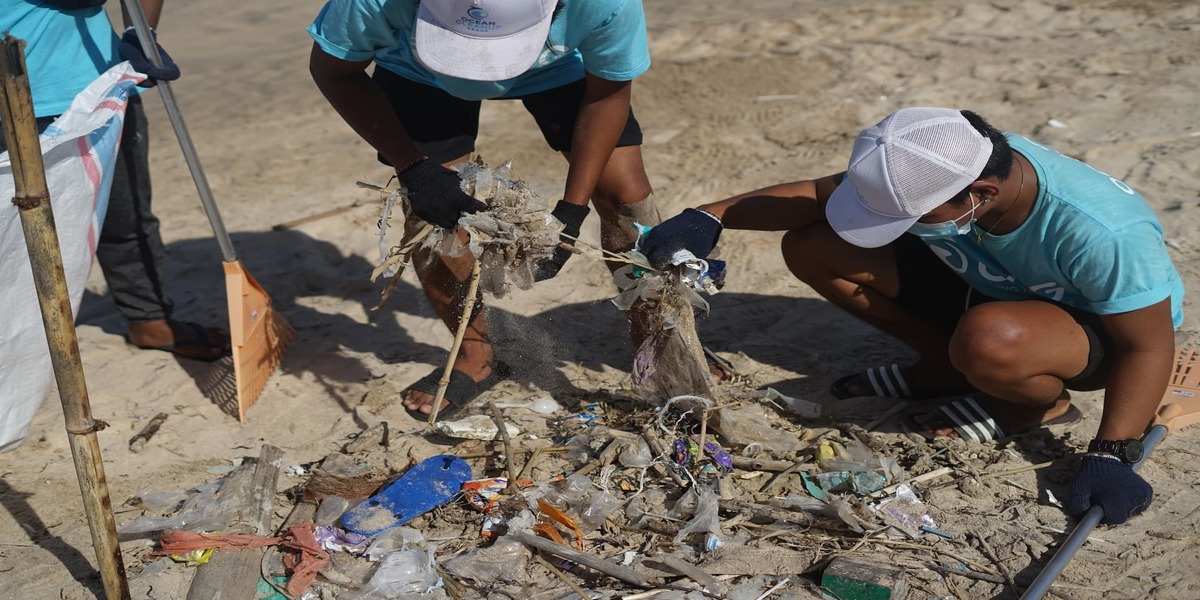Nigeria has a vast array of waste management potentials, especially within mega cities such as Lagos, with a growing population that is exponential to the daily waste generation per capita.
A recent study estimated a volume of over 16,000 tonnes of waste collected daily in Lagos (2019). There is an urgent need to manage the generated waste efficiently.
The Food and Beverage Recycling Alliance (FBRA) was set up as the Producer Responsibility Organization (PRO) for the industry to enhance the recovery of post-consumer packaging waste in Nigeria. It was registered in March 2018 as a Non-Governmental Organization in compliance with the Extended Producer Responsibility (EPR) for manufacturers to take responsibility for the entire life cycle of their products, including their end-of-life use.
Here twenty- nine member companies are proactive in funding initiatives that enhance the recovery of packaging product waste in the environment as part of their buy-back schemes. This Industry Coalition has executed several initiatives since its inception, with a total of 37,000 metric tons of recyclables recovered from the environment.
Achievements
Some highlights of achievements include:
- Engaging in thought leadership dialogues on recycling
- Leading to the adoption of the rPET standard by SON
- Engagement with the Federal Ministry of Environment on the National Plastic Policy
- Working with State Governments to implement an effective policy implementation on waste management
FBRA has impacted 100 communities through awareness campaigns and has a strategic partnership with nineteen waste collectors across ten States in Nigeria to recover post-consumer packaging waste effectively. The established partnerships with Lagos State for the clean-up of the waterways and the waste-to-energy co-processing system of non-recyclable waste as refuse-derived fuel for cement processing with Lafarge through emissions reduction are geared towards the Alliance's set goals.
As the driver for implementing the EPR program in the industry, FBRA continues to set the pace for effective waste recovery activities toward attaining a circular economy in Nigeria. This goal is being achieved through the members who are forward-thinking, responsible, and committed to the program's sustainability.
This article was contributed by our expert Agharese Onaghise
Frequently Asked Questions Answered by Agharese Onaghise
Q1. How can we reduce post-consumer waste?
Post-consumer waste can be reduced by:
- Sensitizing consumers to refuse to package as often as possible
- Rethinking packaging of products during purchase to make choices of sustainable packaging
- Reuse packaging material from products to give the packaging multiple life spans until it cannot be used again
Q2. What is the future of rPET, and why is it sustainable?
The future of recycled PET (rPET) is viable because using recycled material as a resource for the new industry is becoming more lucrative. The development of an rPET industry will drive the demand for feedstock of waste PET material, especially post-consumer material.
Therefore, more material will need to be supplied to the rPET industry to feed into the stream based on the capacity of the machines to process into rPET.
Global commitments require organizations to use a ratio of recycled content in their production, which would drive manufacturers to become off-takers of the rPET industry, creating a ready market for rPET. This is one of the effective and sustainable ways to promote and drive a circular economy of the PET waste stream as an outcome of the used beverage containers/packaging waste; therefore, this waste can serve as revenue for all relevant stakeholders, including the consumers.
Q3. What are some examples of circular economy initiatives?
Some examples of circular economy initiatives include:
- Used Beverage Cartons (TetraPak) material for Polyboards used to make household furniture; table desks and chairs for schools, panel boards, and indoor waste bins
- Use of waste PET to make interlocking tiles, fiber for clothes, and ultimately waste PET bottles for rPET to put back into the production of bottles
- Use of pure water sachet (water pouches made from LDPE material) woven to make bags, clothes, bookcases, etc.
- Use of waste bottles to make flower vases and other ornaments
- Use of flexible plastic material such as shrink wraps and LDPE to make bin bags
Q4. What are the benefits and risks of EPR?
Benefits
- Provides a framework to regulate producers'/manufacturers' responsibilities for their packaging material
- Ensures that all relevant stakeholders in the value chain play a role in protecting the environment
- Provides a guide for pricing of polluters' pay principles
- Creates a bridge between the private and public sectors to work together toward sustainable packaging
- Establishes roles and responsibilities for the waste value chain
- Provides an opportunity to develop a green economy through different initiatives that promote innovation and creativity
Risks
- Creates a system if not well managed, may not be sustainable for the economy
- Creates a platform for free-riding of organizations that do not sign in to the program
- If EPR is not well regulated and enforced, it may not be successful, as only a few organizations will partner with the PRO
- It may bring unhealthy competition and disunity among producers or manufacturers
Create an account to read the full article
Create Account
Already have an account? Sign in

